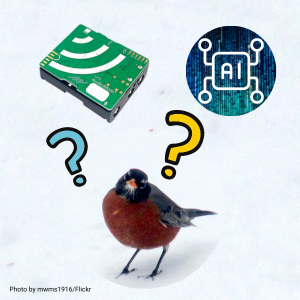From LiDAR imagery to acoustic recording devices, biodiversity monitoring increasingly relies on remote-sensing methods and artificial intelligence to collect data at scale for use in ecological research and to inform urgent conservation efforts. However, the ability to digest, groundtruth, and utilize the resulting streams of 'Big Data' has typically required expertise in computer programming, machine learning (ML), and software development. Further, it is necessary that downstream analyses accommodate and account for inevitable false positives generated by ML models. Research that 1) bridges the gap between machine-learning outputs and biologically relevant information in a manner accessible to practicing ecologists and 2) assesses their information content relative to traditional means of data collection, is needed. In this talk, Dr. Clapp introduces an occupancy model that integrates traditional avian point count data and remotely-sensed acoustic data processed by an ML algorithm to yield estimates of bird occupancy after a prescribed fire. The model was built by an interdisciplinary team of software engineers, biostatisticians, and ecologists, with reproducibility and accessibility in mind. They find that integrating both data types yields more precise estimates of occupancy than either data type does alone. Dr. Clapp will discuss potential pitfalls and future efforts in the innovation space of integrating Big Data into ecological research.
Better together?
Integrating bioacoustic and traditional data to inform avian conservation and management.
Presented by Mary Clapp on Feb. 22, 2024
To view the video in fullscreen mode, click on the icon of 4 arrows pointing outward at the bottom of the player window.
Date posted:
Apr 01, 2024
The Institute for Bird Populations
P.O. Box 518
Petaluma, CA 94953
(707) 789-3224
birdpop.org
The Institute for Bird Populations
P.O. Box 518
Petaluma, CA 94953
(707) 789-3224
birdpop.org





